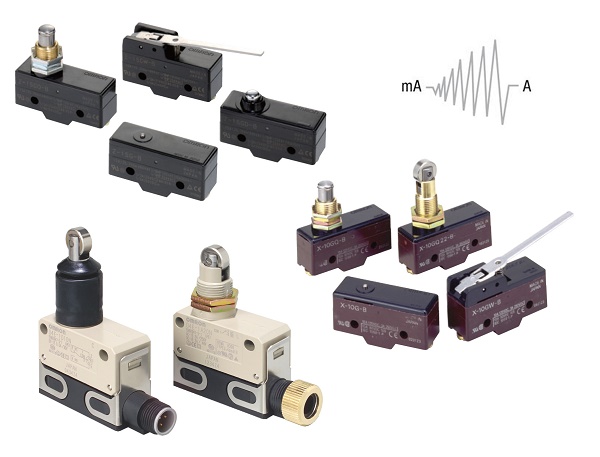Limit switch
What is a limit switch?
The limit switch is an electromechanical switch that has a mechanical actuator or actuator connected to the contacts and is used to detect the range of motion of objects in automated systems. When an object collides with its actuator, its contacts change position and cause the current to disconnect and reconnect.
Technical specifications of limit switch
Actuator: An actuator or stimulus that an object strikes.
Operating Head: A cover that causes the operator to move or change contacts.
Switch Body: NO (normally open) and NC (normally closed) contacts are located here.
Conventional limit switches have two contacts, NO and NC, which are called Single Pole, and other types have four contacts, which are called Double Pole. Also the limit switch contacts are connected to AC and DC voltage or both.
These devices were originally used to restrict the movement of objects and hence became known as limit switches or limit switches.

Types of limit switches
Conductive Limit Switches
Principles of measurement and performance: Conductivity in a liquid medium is different from other media. When the liquid reaches a certain limit of the height and start-up of the electrode, it blocks the DC alternating current circuit between the two electrodes or between the container wall and one electrode. The switching signal is generated from a sudden increase in current consumption. Acids and water-containing solutions are conductive and can be well identified using props made of resistant materials. Combustible liquids such as gasoline, oil, etc. are non-conductive and are not measured according to this principle. Two electrodes mounted above the surface of a conductive liquid should be examined. If the liquid level rises to the point where both electrodes are in contact with the liquid, the current circuit is activated through a relay connected by the two electrodes and the existing liquid and activating a switching signal. The minimum conductivity of the liquid should be 10 microns per centimeter. These conditions are practically caused by conductive liquids such as water, acid, etc. with the exception of pure solvent.
In order to prevent electrical effects in the liquid, an alternating current DC is used for the measurement. This is generated by an electrode relay or a converter. Liquid level assessment can be easily obtained from this measurement method. Especially the separation of oil (oil and gasoline) from non-conductive water and liquid is easily done by this method. For example, a flat-type inductive proximity switch is suitable for detecting distances between 2 mm and 18 mm and has a wide range of electronic connections such as NO, NC, NPN and PNP.
Capacitive Limit Switch
Principles of measurement and operation: To measure a capacitor, a material with a constant permeability is required. Its strong and simple construction allows it to measure the level of liquids, granular solids, and conductive and non-conductive materials. The metal container wall and the sensor measurement are in the form of two electrodes from a capacitor. The capacitance changes as the dielectric constant increases. The capacitive switch is used to monitor the maximum and minimum values in the tanks.
Vibration Limit Switches
Measurement Principles: Vibration switches, also known as amplitude switches, are used to control the level of liquids and powdered solids. The mechanisms of vibration level controllers are such that they normally start vibrating at a defined frequency, and in the case where solid powders or liquid fluids reach that surface, they change due to changes in the amplitude environment and the amount of vibration frequency. This change is felt by the electronic design and the output command of the desired switch is issued.
With the advancement of technology and the construction of electronic sensors, limit switches have now been replaced in most cases by proximity sensors. But electromechanical limit switches are still used because of their simplicity, low price, easy installation and operation, and reliability.
What is the use of limit switch?
Limit switches can detect the presence or absence of an object and the position, passage, and end of an object. Limit switches have a variety of applications in the industry due to their ease of installation and use, robustness and reliability. Limit switches are used to control the movement of machines, for example, automatic lathes, conveyors, cutting machines, forklifts and cranes, as well as counters and radial drills. Limit switches are used as part of the control system, as a safety lock or to count objects passing through a certain point.
Mechanical advantages of limit switch
Easy to use
Simple and visible operation
Having a durable coating
High repeatability
Electrical benefits of limit switches
Ability to pass high current
Resistance to electrical noise
Resistance to radio interference frequencies
No leakage current
Minimum voltage drop
Simple operation of NO and NC blades
Disadvantages of limit switches
Shorter life of contacts compared to non-contact sensors
Wearing of the moving mechanical part


